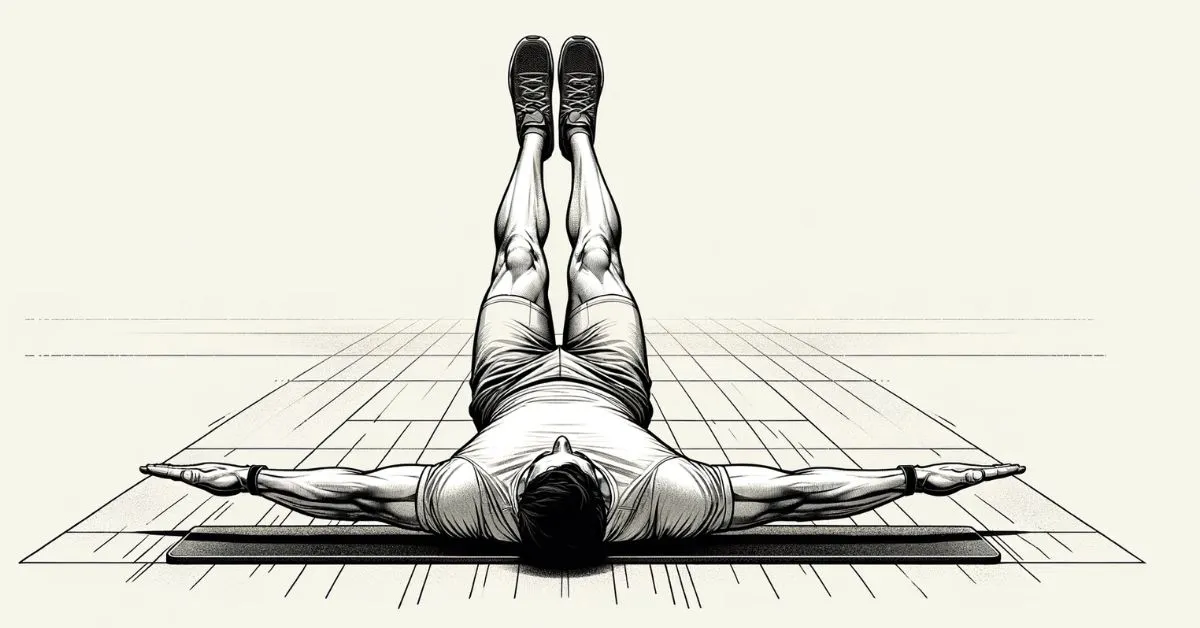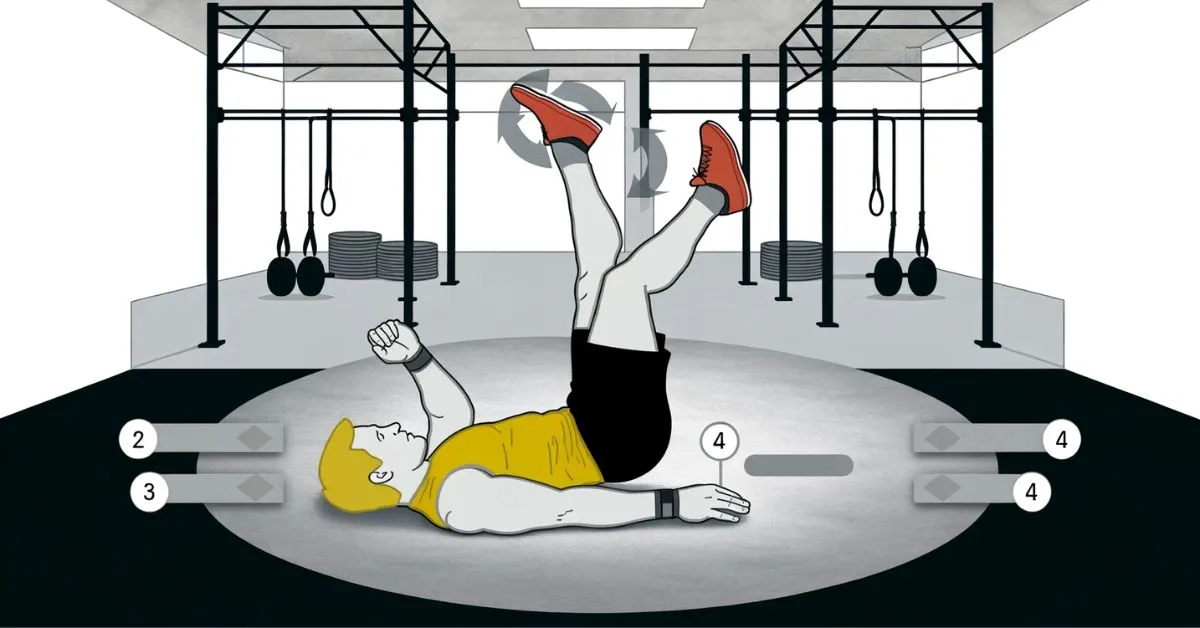Welcome to my fitness journey! I’m Alia, and today, I’m excited to share with you a gem in the world of core workouts: the Dead Bug exercise.
This underrated yet powerful exercise isn’t just another trend; it’s a core-stabilizing, posture-improving, and lower back pain-reducing powerhouse that can transform the way you feel and move. If you’re looking to enhance your fitness routine with a movement that targets the deep abdominal muscles and offers a host of benefits, you’re in the right place.
The Dead Bug exercise, with its quirky name derived from the bug-like starting position, isn’t just about looking funny on the floor. It’s a serious workout for your transversus abdominis, lower back, obliques, and hip flexors. Ideal for anyone from fitness novices to seasoned athletes, this exercise promises not only to strengthen your core but also to improve your spinal stability and enhance your overall posture.
Read on as I break down how to perform the Dead Bug correctly, explore its numerous benefits, and answer some frequently asked questions. Whether you’re at home, in the gym, or on the road, let’s crawl our way through this exercise together and see just how effective it can be for your fitness goals!
The Dead Bug exercise is a popular core-boosting exercise that targets the deep abdominal muscles, particularly the transversus abdominis, lower back, obliques, and hip flexors.
It’s known for improving core stability, reducing lower back pain, and improving overall posture and balance.
The name “Dead Bug” comes from the starting position, which resembles a bug lying on its back.
How to Fulfil the Dead Bug Exercise
Here’s a step-by-step guide to performing the Dead Bug exercise correctly:
Start Position

Lie on your back on a flat surface. Raise your arms straight up towards the ceiling, directly above your shoulders.
Lift your legs and bend your knees at a 90-degree angle so your thighs are vertical to your body and your calves are parallel to the ground. This is the starting position, resembling a dead bug.
Movement

Engage your core by pulling your belly button towards your spine and pressing your lower back into the floor. This position should be maintained throughout the entire exercise to protect your lower back and ensure the core muscles are being worked.
Also Read Belly Fat Be Gone: 5 Best Strength Workouts to Target and Tone Apron Belly
Extension
Slowly lower your right arm and left leg simultaneously, uncurling them towards the floor.
Keep the movement controlled, and stop just before your arm and leg touch the ground. Your left arm and right leg should remain stationary and raised.
Return
Return your right arm and left leg to the starting position.
Alternate
Repeat the movement with your left arm and right leg, alternating sides for each rep.
Repetitions
Perform 10-15 repetitions per side, or as many as possible with good form. You can increase the number of sets as you get stronger.
Tips for Effective Execution
- Keep the movement slow and controlled to maximize the engagement of the core muscles.
- Confirm that your lower back remains in contact with the floor throughout the exercise to avoid straining it.
- Breathe as you extend your arm and leg, and inhale as you return to the starting position.
- You can hold light weights in your hands or wear ankle weights to increase the challenge.
Dead Bug Exercise Benefits
Here are some of the key benefits of incorporating the Dead Bug exercise into your workout routine:
Core Strengthening
The Dead Bug is highly effective in activating and strengthening the deep core muscles, including the transversus abdominis, rectus abdominis, and obliques. A strong core is essential for overall stability, balance, ease of performing daily activities, and athletic performance.
Improves Spinal Stability
By engaging the core muscles, the Dead Bug exercise helps to stabilize the spine, which is crucial for preventing lower back pain and injuries. This stabilization is particularly beneficial for individuals who sit for extended periods or have sedentary lifestyles.
Enhances Posture
Regularly performing the Dead Bug can lead to improved posture. A strong core helps maintain proper spine alignment, reducing slouching and promoting a more upright and confident posture.
Reduces Lower Back Pain
Exercise is known to alleviate and prevent lower back pain. By strengthening the core and improving spinal stability, the Dead Bug exercise helps to take pressure off the lower back, reducing discomfort and the risk of developing chronic pain.
Improves Balance and Coordination
The Dead Bug requires coordination and control to simultaneously move opposite arms and legs, which can improve overall balance and coordination. This benefit translates into better sports performance and daily activities requiring stability and precise movements.
Safe for a Wide Range of Fitness Levels
The Dead Bug is a low-impact exercise that can be easily modified to accommodate beginners or those with physical limitations, making it safe for most individuals. It can also be made more challenging for advanced exercisers by adding weights or altering the speed of the movements.
No Equipment Required
This exercise does not require special equipment, making it accessible for anyone to perform anywhere—at home, in the gym, or while travelling.
Promotes Diaphragmatic Breathing
The Dead Bug exercise encourages proper breathing techniques, as the movement requires you to engage your core and breathe deeply. Diaphragmatic breathing is beneficial for stress reduction and improving oxygen flow to the muscles.
Pros and Cons of the Dead Bug Exercise
Pros
- It targets deep core muscles, enhancing stability around the spine and pelvis.
- Strengthening the core helps alleviate stress on the lower back, reducing pain and the risk of injury.
- It can be easily modified to increase or decrease difficulty, making it accessible to beginners and advanced exercisers.
- This can be performed anywhere without special equipment.
- Engages the brain by requiring coordination of opposite limbs, improving overall balance and proprioception.
Cons
- The coordination required for opposite arm and leg movement can be complex for beginners.
- Incorrect form can lead to strain or injury, such as not keeping the lower back pressed into the floor.
- Individuals with specific injuries or health conditions may need to modify or avoid the exercise altogether.
FAQs
Q: How often should I do the Dead Bug exercise?
A: Incorporate it into your core or full-body workout routines 2-3 times per week, allowing for rest days in between.
Q: How many repetitions of the Dead Bug exercise should I do?
A: Start with 10-15 repetitions per side and gradually increase as you become stronger. Aim for 2-3 sets.
Q: Can the Dead Bug exercise help with back pain?
A: Yes, by strengthening the core, it can help reduce and prevent lower back pain. However, consult with a healthcare professional if you have ongoing back issues.
Q: Is the Dead Bug exercise suitable during pregnancy?
A: It can be modified for pregnancy, but it’s essential to consult a healthcare provider or a pre-natal fitness specialist before performing any exercise during pregnancy.
Conclusion
The Dead Bug exercise is a highly effective core-strengthening workout that offers numerous benefits, including improved stability, reduced lower back pain, and better posture. Its versatility makes it suitable for a wide range of individuals, from beginners to advanced athletes, and it can be easily modified to match different fitness levels or physical conditions.
While the Dead Bug exercise is generally safe and beneficial, it’s crucial to perform it with proper form to avoid strain or injury, particularly to the lower back. For those new to the exercise or with existing health concerns, consulting with a fitness professional or healthcare provider is advisable to ensure it’s appropriate for their needs.


